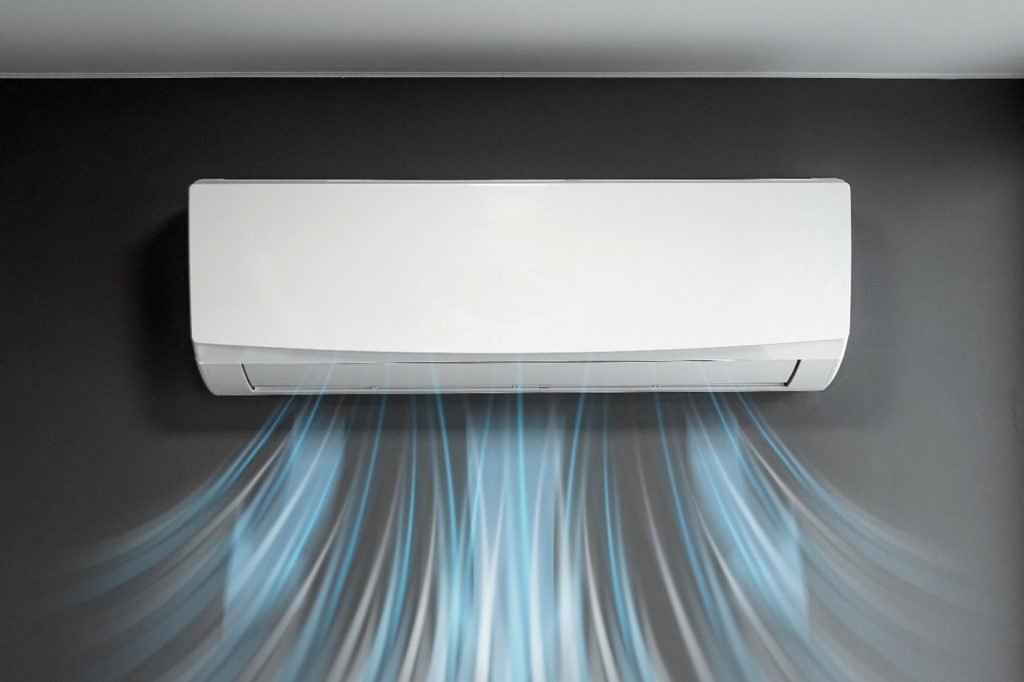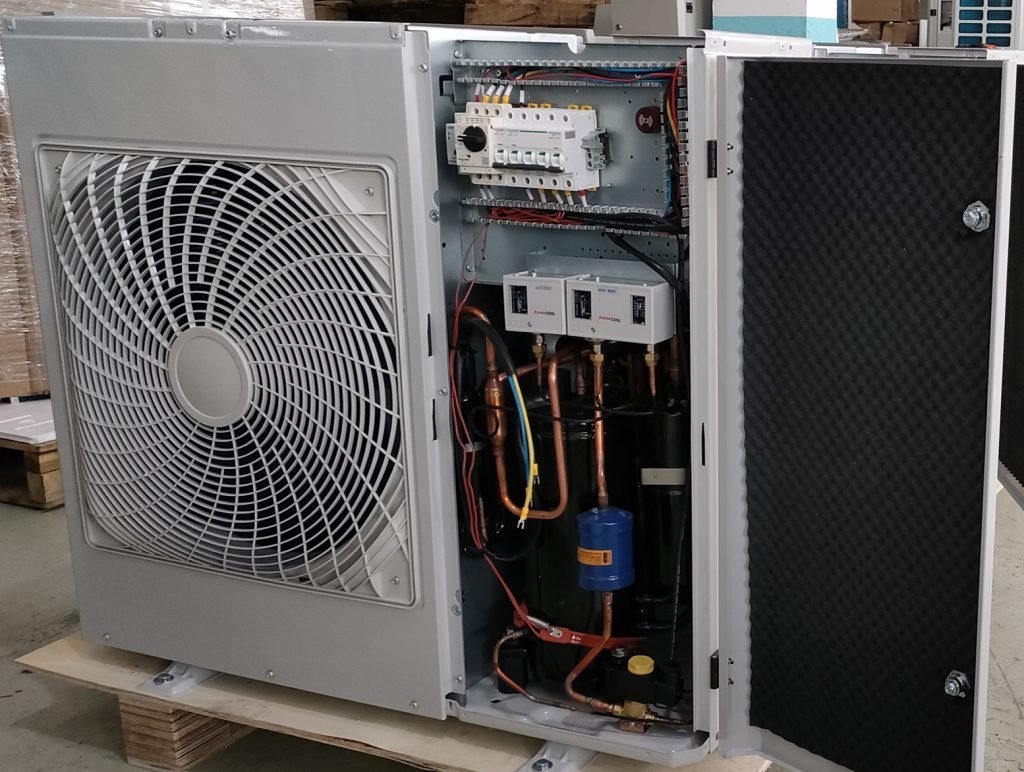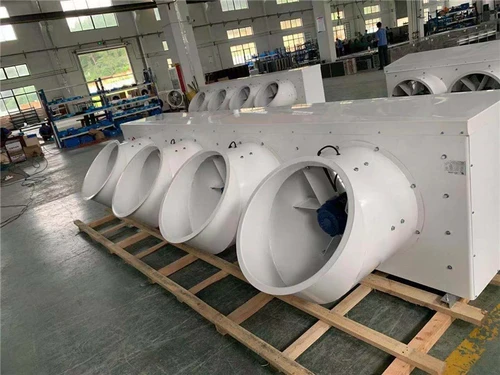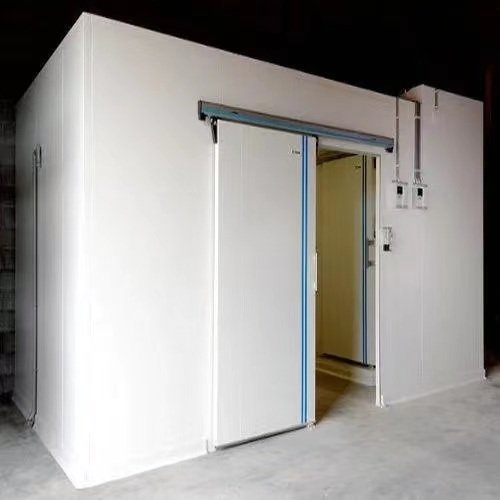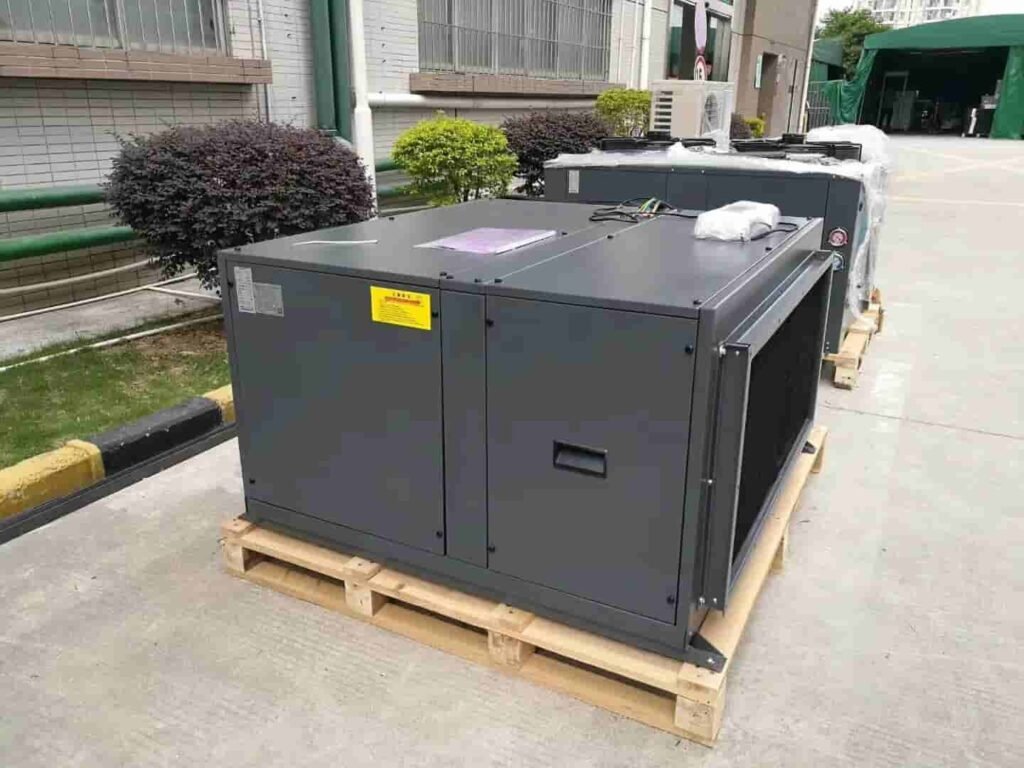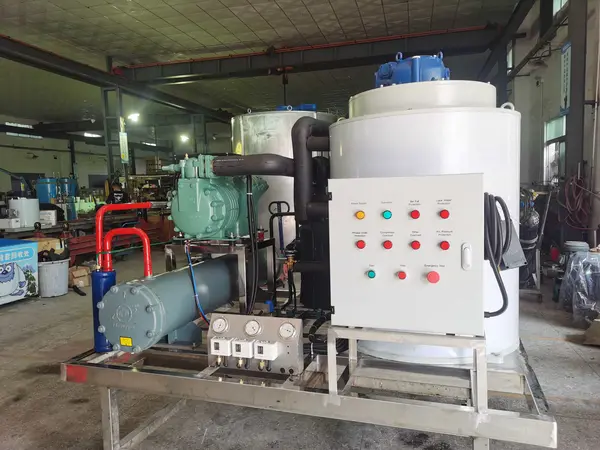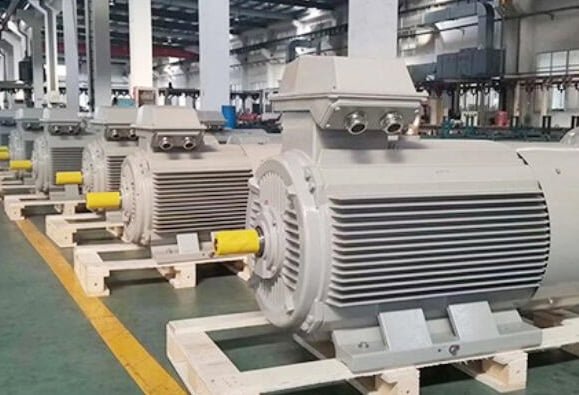Cold rooms are essential for preserving perishable goods, but water leakage can compromise their efficiency and lead to costly damages. If you’ve noticed puddles, damp spots, or condensation in your Quarto frio, it’s crucial to identify the root cause and address it promptly.
Water leakage not only disrupts controle de temperatura but can also damage stored products, equipamento, and the structure itself.
From condensation buildup and faulty drainage systems to damaged porta seals and external water ingress, there are numerous reasons why your Quarto frio might be leaking water. Understanding these causes and implementing the right solutions can help you maintain a leak-free, efficient cold room.
Neste artigo, we’ll explore the common causes of water leakage in cold rooms, provide detailed solutions, and share preventive measures to ensure your Quarto frio opera sem problemas.
Se você está lidando com pequenos gotas ou grandes vazamentos, Este guia o ajudará a solucionar o problema e protegerá seu investimento.
Causas e soluções para vazamento de água
1. Condensação pingando
Causas:
–Altos níveis de umidade dentro da sala fria
–Isolamento ruim nas paredes, tetos, ou pisos
—Temperatura diferenças entre o Quarto frio e seu ambiente
–Aberturas de portas frequentes, permitindo quente, ar úmido para entrar
Soluções:
–Instale a desumidificador Para controlar os níveis de umidade
–Melhorar isolamento usando materiais de alta qualidade e lacunas de vedação
–Use fechos de porta automáticos para minimizar porta aberturas
–Garanta a ventilação adequada para reduzir o acúmulo de umidade
2. Vazamento do sistema de drenagem
Causas:
–Linhas de drenagem entupidas devido a detritos, gelo, ou mofo
–Inclinação inadequada ou alinhamento da linha de drenagem
–Capacidade insuficiente da panela de drenagem para lidar com gelo derretido
Soluções:
–Limpe regularmente a linha de drenagem para evitar bloqueios
–Ensure the drain line is properly sloped for efficient water flow
–Install a larger drain pan if necessary
–Use a drain heater to prevent freezing in colder environments
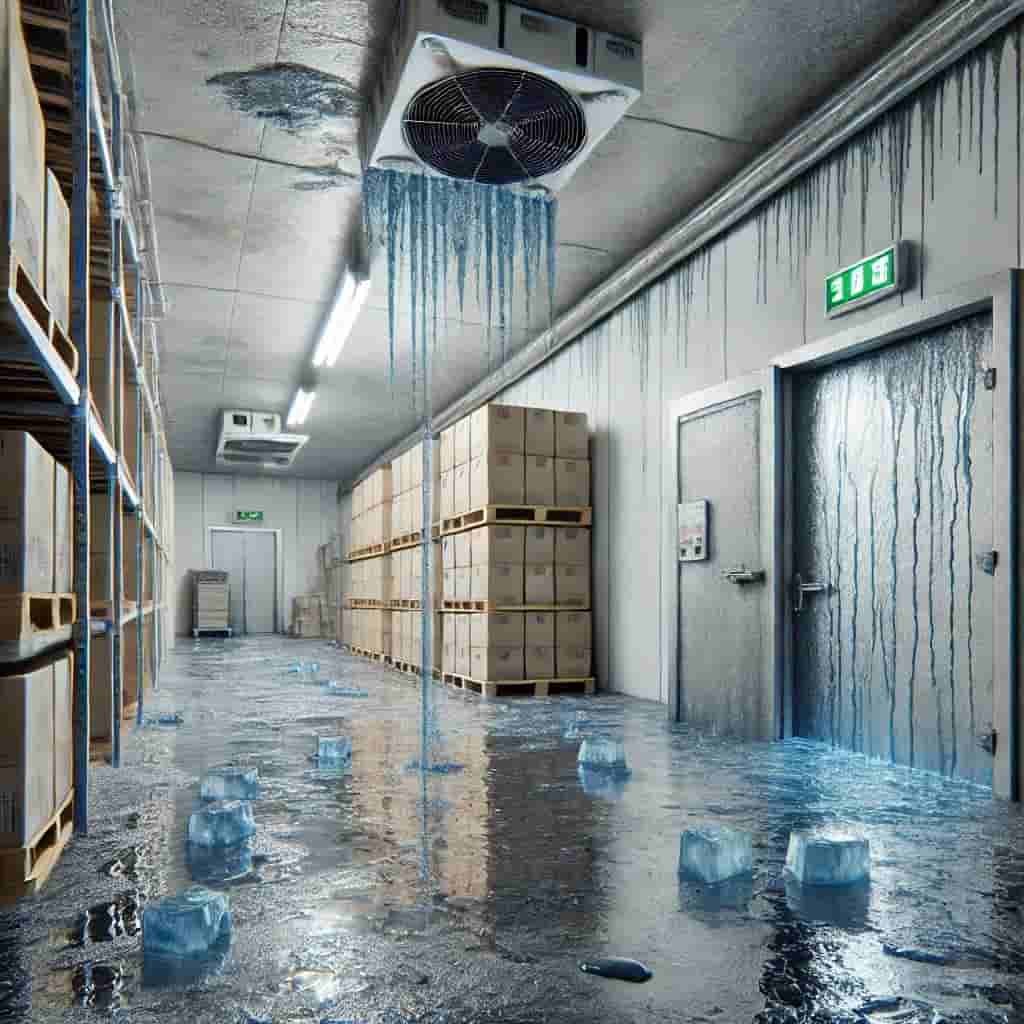
3. Ice Melt Leakage
Causas:
–Excessive ice buildup on evaporator coils due to faulty defrost systems
–Blocked drain pans or drain lines
–Inadequate drainage during defrost cycles
Soluções:
–Check and repair the defrost system (timer, heater, or hot gas defrost)
–Clean the drain pan and drain line regularly
–Ensure the drain pan is properly aligned to direct water into the drain line
–Increase the frequency of defrost cycles if necessary
4. Door Seal Leakage
Causas:
Worn, cracked, or damaged porta gaskets
Misaligned doors that do not close tightly
Aberturas de portas frequentes, permitindo quente, ar úmido para entrar
Soluções:
–Inspect and replace damaged door gasket
–Adjust or repair the door mechanism to ensure proper alignment
–Install automatic door closers to minimize door openings
–Use strip curtains to reduce air exchange when the door is open
5. Structural Leakage
Causas:
–Cracks or gaps in walls, pisos, or ceilings due to aging or poor construction
–Water ingress from external sources (por exemplo., rain or flooding)
–Poor sealing of joints or panels
Soluções:
–Inspect the structure for cracks and seal them with Quarto frio-specific sealants
–Reinforce the structure to prevent future damage
–Waterproof the exterior to protect against external water sources
–Ensure all joints and seams are properly sealed during construction or repairs
6. Refrigeration System Leakage
Causas:
Refrigerante leaks from damaged pipes or faulty components
Water pooling around the refrigeration unit due to improper installation
Condensation from uninsulated refrigerant lines
Soluções:
–Inspect the refrigeration system for leaks and repair them promptly
–Ensure proper installation and isolamento of refrigerant lines
–Check for water pooling around the unit and address the source of the leak
–Schedule regular maintenance with a qualified technician
7. Overflowing Drain Pan
Causas:
–Drain pan is too small to handle the volume of melted ice
–Improper positioning of the drain pan
–Blocked drain lines causing water to back up
Soluções:
–Install a larger drain pan if necessary
–Ensure the drain pan is properly positioned to direct water into the drain line
–Clean the drain line regularly to prevent blockages
–Check the drain pan for damage and replace it if needed
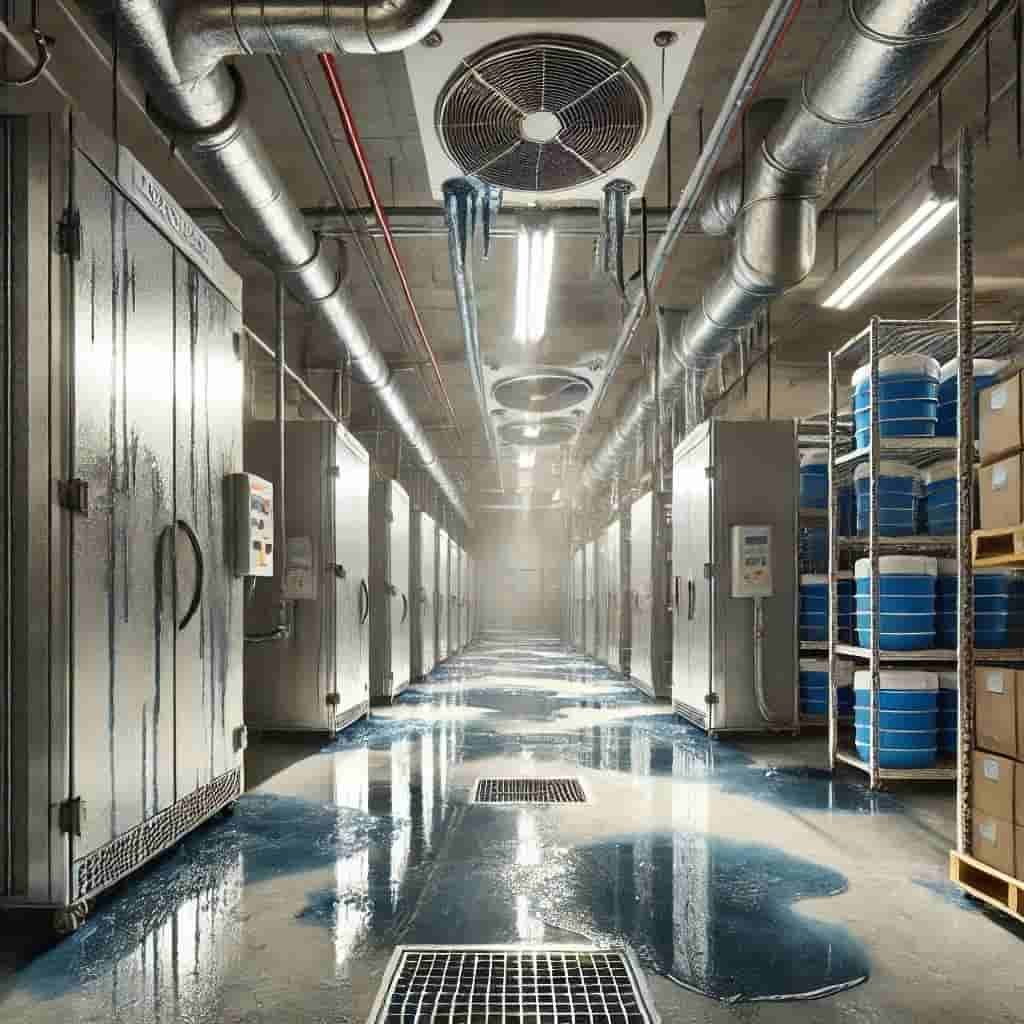
8. Vapor Barrier Leakage
Causas:
–Tears or gaps in the vapor barrier due to poor installation or damage
–Moisture penetrating the insulation due to a faulty vapor barrier
Soluções:
–Inspect the vapor barrier for tears or gaps and repair them
–Ensure the vapor barrier is properly installed and fully sealed
–Replace the vapor barrier if it is damaged or ineffective
–Use high-quality materials for the vapor barrier during construction or repairs
9. External Water Ingress
Causas:
–Water entering through cracks or gaps in the structure
–Exposure to rain, flooding, or nearby plumbing leaks
–Poor sealing of the cold room’s exterior
Soluções:
–Inspect the exterior for cracks or gaps and seal them
–Elevate the Quarto frio or install barriers to protect against flooding
–Waterproof the exterior by applying protective coatings
–Ensure proper sealing of all external joints and seams
10. Frost Melt Leakage
Causas:
–Excessive frost buildup on walls, tetos, ou evaporador bobinas
–Poor airflow causing uneven cooling
–Faulty defrost systems leading to ice accumulation
Soluções:
–Regularly defrost the evaporator coils and check the defrost system
–Ensure proper airflow by organizing stored items and avoiding obstructions
–Increase the frequency of defrost cycles if necessary
–Inspect and repair the defrost system to prevent excessive ice buildup
11. Joint or Panel Leakage
Causas:
–Gaps between wall, teto, or floor panels due to poor sealing or aging
–Improper installation of panels or joints
Soluções:
–Inspect all joints and seams for gaps or separation
–Use cold room-specific sealants to reseal the joints
–Ensure panels are properly aligned and fastened during installation or repairs
–Replace damaged panels or joints if necessary
12. Humidity-Related Leakage
Causas:
–High humidity levels inside the Quarto frio
–Inadequate ventilation or humidity control
–Aberturas de portas frequentes, permitindo quente, ar úmido para entrar
Soluções:
–Instale a desumidificador Para controlar os níveis de umidade
–Garanta a ventilação adequada para reduzir o acúmulo de umidade
–Usar automatic door closers to minimize door openings
–Monitor humidity levels regularly and adjust settings as needed
General Preventive Measures
–Conduct regular inspections of the Quarto frio for signs of water leakage.
–Treinar funcionários para identificar e relatar possíveis problemas com antecedência.
–Implementar um programa de manutenção programado para resolver os problemas de forma proativa.
–Mantenha um log de manutenção para rastrear os reparos e identificar problemas recorrentes.
Conclusão
O vazamento de água em sua sala fria pode levar a problemas significativos, De produtos estragados a danos estruturais.
No entanto, Ao entender as causas comuns - como condensação, drenagem com defeito, vedações danificadas, ou entrada de água externa - você pode tomar medidas proativas para resolver e evitar esses problemas.
Manutenção regular, isolamento adequado, e os reparos oportunos são essenciais para garantir o seu Quarto frio opera com eficiência e permanece livre de vazamentos.
Não deixe vazamento de água interromper suas operações ou comprometer seus produtos armazenados. Ao implementar as soluções descritas neste artigo e permanecer vigilante com as inspeções, Você pode proteger sua sala fria e prolongar sua vida útil.
Lembrar, um bem conservado Quarto frio Não apenas economiza dinheiro, mas também garante a qualidade e a segurança de seus itens perecíveis. Tome medidas hoje para manter sua sala fria em estado ideal!



